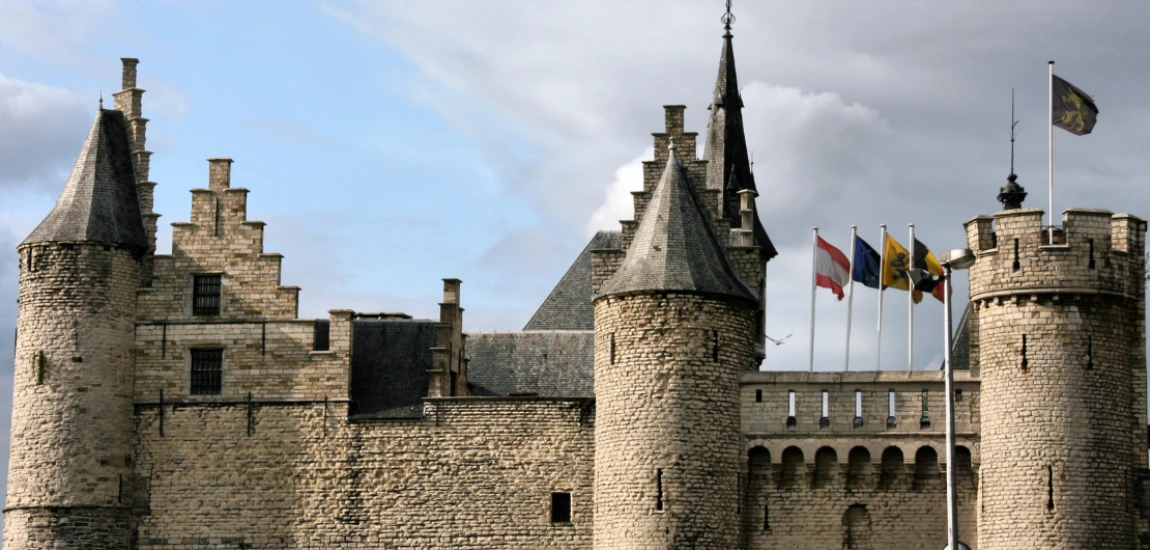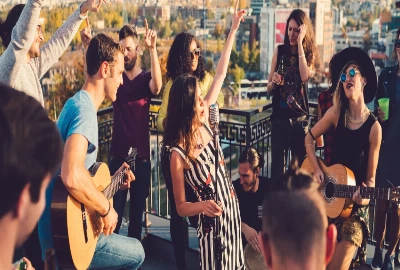“Neo-Medievalism” in Pop Culture: Why Medieval Aesthetics Are Making a Comeback in Music, Fashion, & Entertainment

In recent years, pop culture has become increasingly fascinated with the medieval past. From the rise of fantasy shows like House of the Dragon and The Witcher to the surge in medieval-inspired fashion on runways, the cultural landscape is steeped in what scholars and fans alike call neo-medievalism. This term refers to the modern reinterpretation of medieval aesthetics, values, and symbolism across entertainment, music, and art. But this revival isn’t about strict historical accuracy—it’s about reimagining the Middle Ages through a contemporary lens.
The return of medieval aesthetics speaks to society’s longing for myth, ritual, and a sense of timelessness in a fast-paced, digital-first era. While medievalism has long been tied to fantasy literature like The Lord of the Rings, its current manifestation stretches far beyond books. Today, it permeates high fashion, music videos, blockbuster films, video games, and even TikTok aesthetics.
So why are we obsessed with knights, castles, and chivalry again? Let’s explore the cultural, social, and aesthetic forces driving this medieval comeback.
Medievalism in Modern Fashion: Runways, Streetwear, and Symbolism

Runway Couture Meets Medieval Armor
Fashion designers have increasingly turned to medieval motifs, transforming chainmail, velvet cloaks, and ornate embroidery into runway statements. Major houses like Alexander McQueen and Balenciaga have embraced medieval-inspired designs, blending armor-like silhouettes with futuristic fabrics. This fusion of old and new embodies neo-medievalism perfectly—evoking the strength of knights while catering to a modern, edgy aesthetic.
Streetwear and Everyday Medieval Touches
It’s not just haute couture embracing medievalism. Streetwear brands and indie designers incorporate elements like heraldic symbols, oversized tunics, and Gothic typography into hoodies and tees. These styles often appear in music videos and festivals, where medieval imagery merges with modern subcultures like goth, punk, and metal. This democratization of medieval aesthetics ensures that it’s not limited to high fashion but also accessible to everyday wear.
Symbolism and Identity Through Clothing
Part of neo-medieval fashion’s allure lies in symbolism. Armor and cloaks evoke protection, rebellion, and individualism. In an age of uncertainty, wearing garments inspired by knights or mystical figures can feel empowering. The popularity of accessories like chain belts, heavy boots, and ornate jewelry mirrors the way medieval people used fashion to signal status and allegiance.
Fashion, in this sense, is not just decorative—it’s a form of modern storytelling rooted in ancient myth.
Neo-Medievalism in Music: From Folk Revival to Metal and Pop

Medieval Folk and Neo-Traditional Sounds
Musicians are increasingly weaving medieval instruments and motifs into their work. Folk bands like Heilung and Wardruna use authentic medieval and Viking-era instruments, blending ritualistic chants with modern production. These performances feel like stepping into a time capsule, offering listeners an escape from modern chaos into something primal and mystical.
Heavy Metal and Gothic Revival
Metal subgenres like symphonic metal and black metal have long embraced medieval aesthetics. Bands such as Nightwish and Sabaton use lyrics about knights, battles, and mythology, pairing them with medieval-inspired album covers. The connection between medieval imagery and heavy guitar riffs reflects the enduring association between medievalism, rebellion, and raw power.
Pop and Mainstream Artists
Even mainstream pop has borrowed from medievalism. Artists like Madonna, Florence + The Machine, and Beyoncé have used medieval-inspired costumes and visuals in performances and music videos. The symbolism resonates because it offers a blend of fantasy, nostalgia, and spectacle that captivates modern audiences.
Ultimately, neo-medieval music channels a yearning for ritual and myth, offering a soundtrack for an age craving meaning beyond digital noise.
The Silver Screen and Streaming: Fantasy, Medievalism, and Escape

Blockbuster Epics and Fantasy Universes
Film and television are arguably the most visible spaces for neo-medievalism. Franchises like Game of Thrones, The Lord of the Rings, and House of the Dragon dominate pop culture conversations, reintroducing audiences to castles, knights, and dynastic battles. These shows don’t just recreate the medieval period; they reimagine it with contemporary values and narrative depth.
Streaming Platforms Fueling Medieval Nostalgia
Streaming services like Netflix and Amazon Prime have made medieval-inspired series more accessible than ever. Shows like The Witcher and Vikings: Valhalla bring medieval folklore to a global audience, blending historical authenticity with fantasy storytelling. Their success highlights the global hunger for medieval-inspired narratives.
Escapism in an Age of Uncertainty
Part of the medieval revival in film lies in its escapist power. When the present feels unstable—whether due to technology, politics, or climate—audiences crave stories set in worlds where honor, magic, and destiny shape human lives. The medieval past becomes a lens to reflect on present anxieties while offering comfort in timeless archetypes.
Gaming and Digital Neo-Medievalism: Castles in Cyberspace

Medieval Fantasy RPGs
Video games are a central force in the neo-medieval revival. Franchises like Elden Ring, Skyrim, and The Legend of Zelda immerse players in vast medieval-inspired worlds where quests, battles, and mythic journeys unfold. These games allow players not just to consume medieval imagery but to actively participate in it.
Online Communities and Roleplay
MMORPGs like World of Warcraft and Final Fantasy XIV bring medieval elements into online communities. Players create avatars inspired by knights, wizards, or monks, engaging in a digital version of medieval roleplay. This interactive storytelling allows millions to collectively reimagine the Middle Ages.
VR and Future of Digital Medievalism
As virtual reality grows, expect neo-medievalism to expand further. Immersive medieval settings provide not only entertainment but also educational and therapeutic applications. The ability to virtually walk through castles or reenact medieval rituals adds a new dimension to our fascination with the era.
The Psychology Behind Neo-Medievalism: Why Now?

Craving Ritual and Community
In a fragmented, hyper-digital world, medievalism offers ritual, tradition, and community. Whether through concerts, festivals, or cosplay, neo-medievalism creates shared spaces that feel sacred and timeless—something missing from modern secular life.
Nostalgia for an Imagined Past
Importantly, neo-medievalism is not about historical accuracy but about a romanticized Middle Ages. People imagine the era as full of chivalry, mysticism, and adventure, even if the reality was harsher. This imagined past provides emotional comfort in turbulent times.
Rebellion Against Modernity
Neo-medievalism can also be read as resistance to modernity. In a world dominated by algorithms, AI, and hyper-speed communication, medieval aesthetics slow things down. Rituals, costumes, and medieval-inspired storytelling act as a counterweight to the disembodied nature of digital life.
The Future of Neo-Medievalism in Pop Culture

Expanding Across Platforms
Neo-medievalism isn’t slowing down. Expect more fashion collaborations, music projects, and films drawing on medieval aesthetics. As social media platforms like TikTok amplify “aesthetic movements,” medieval-inspired subcultures will continue spreading globally.
Blending Past and Future
Future iterations of medievalism will likely combine historical aesthetics with futuristic elements. We’re already seeing cyber-medieval hybrids in music videos and gaming, where glowing swords and digital castles fuse medieval imagery with sci-fi. This “future medievalism” will only expand.
Lasting Impact on Identity and Culture
Ultimately, neo-medievalism offers more than just style—it’s reshaping how people express identity, create community, and tell stories. As long as humans crave myth, ritual, and timeless aesthetics, medievalism will remain a vital part of pop culture.



